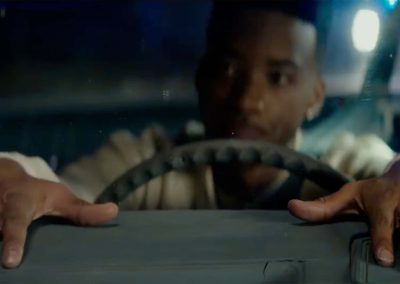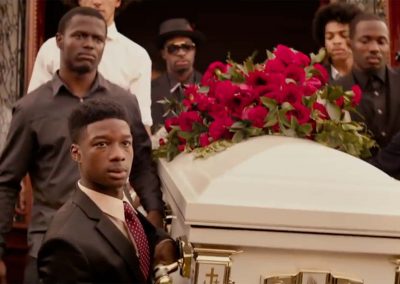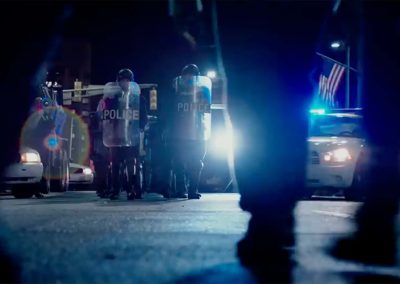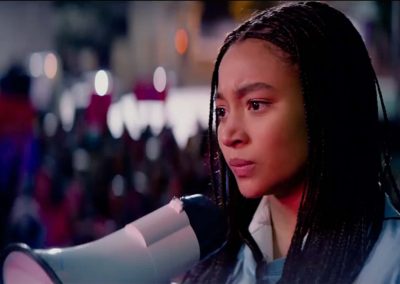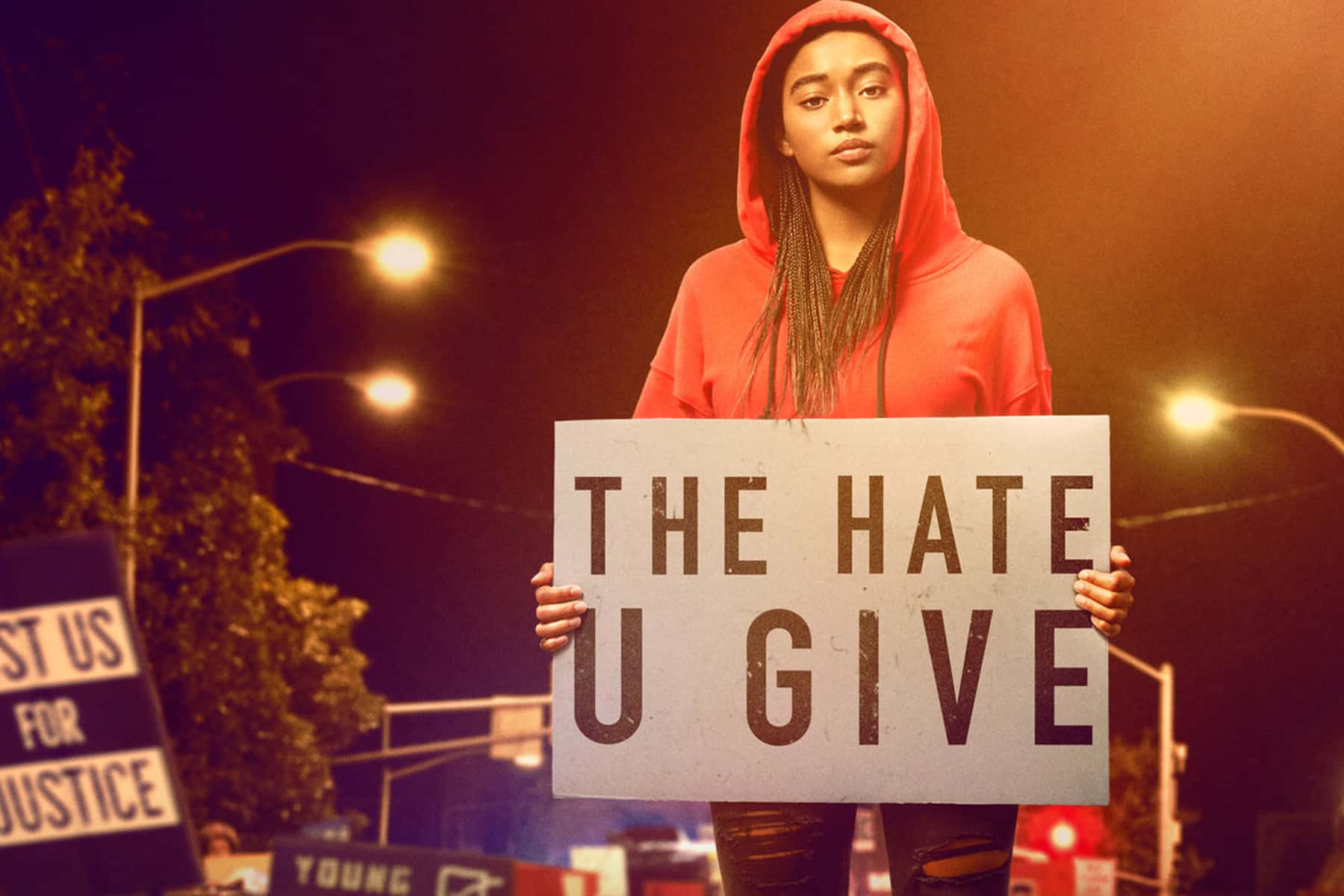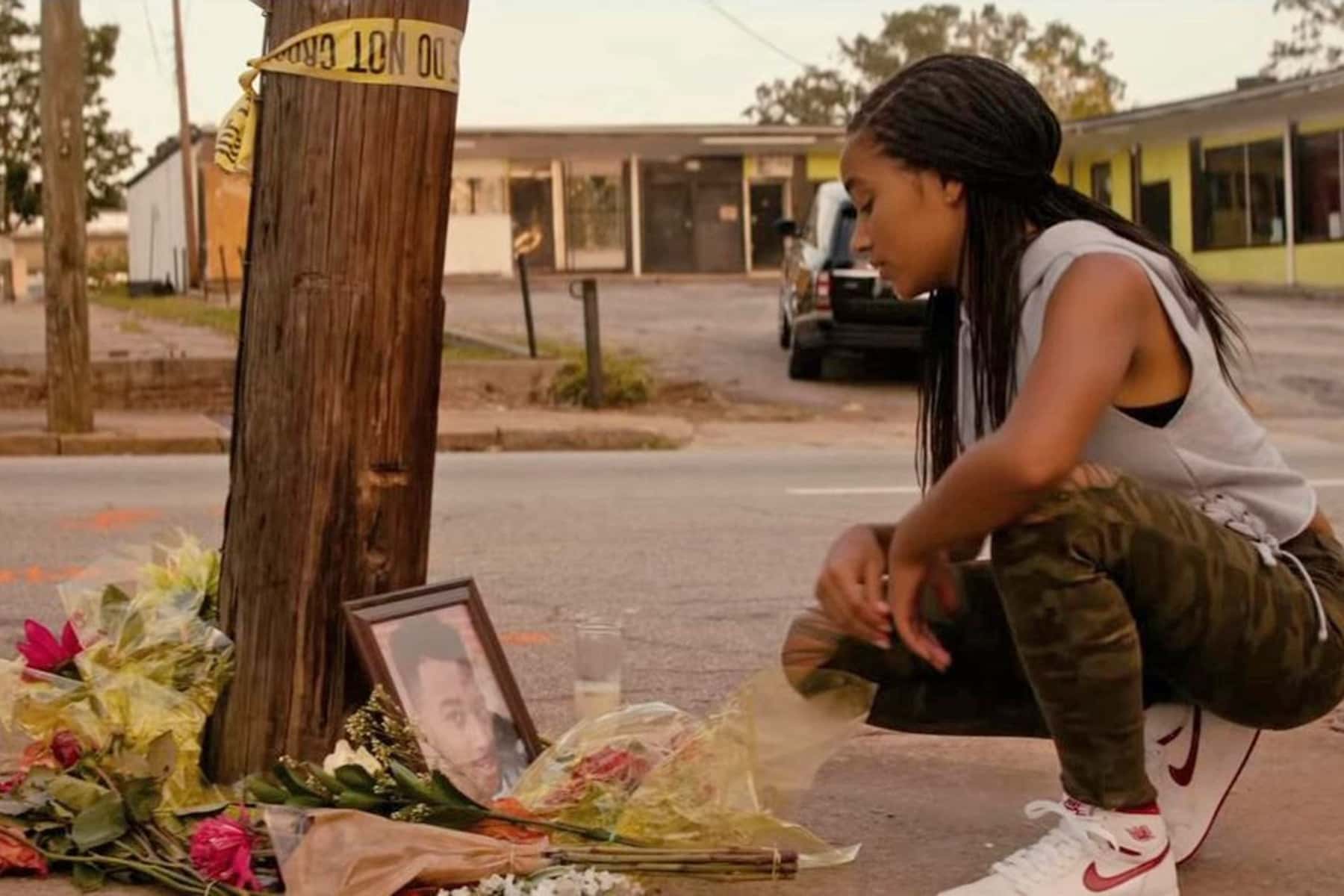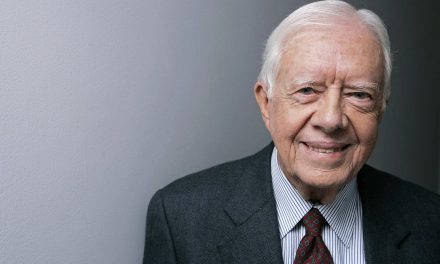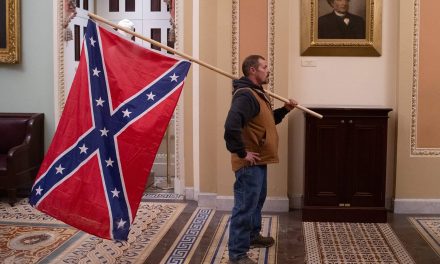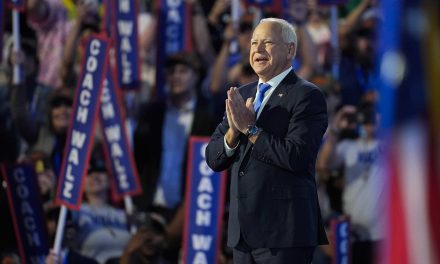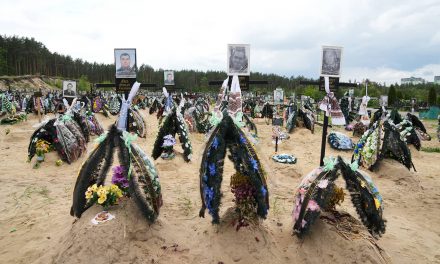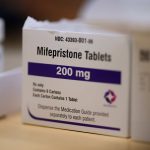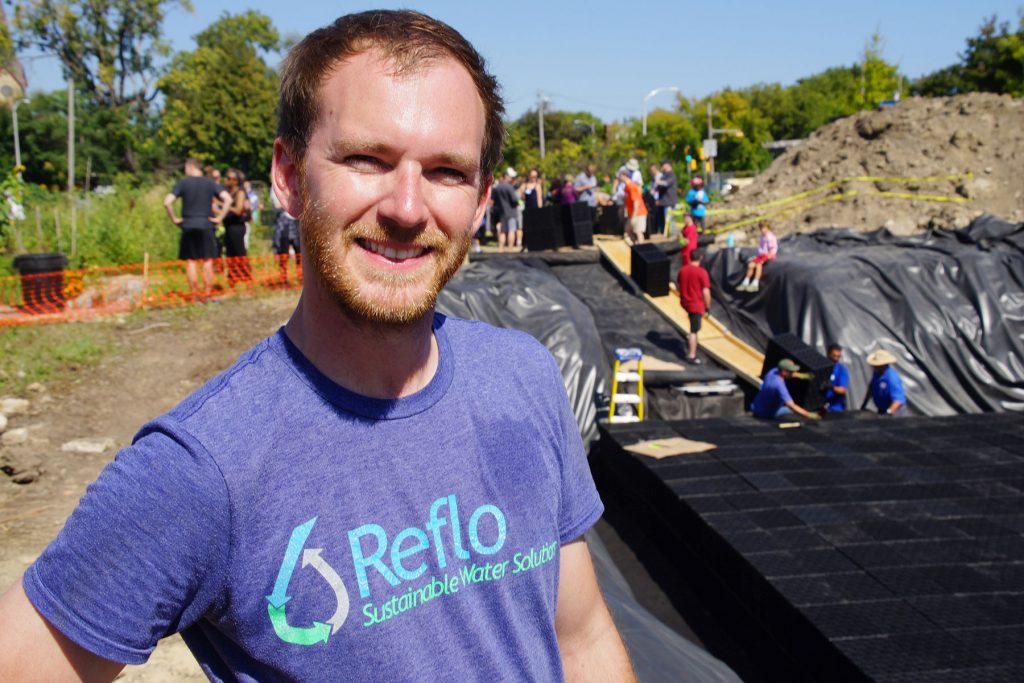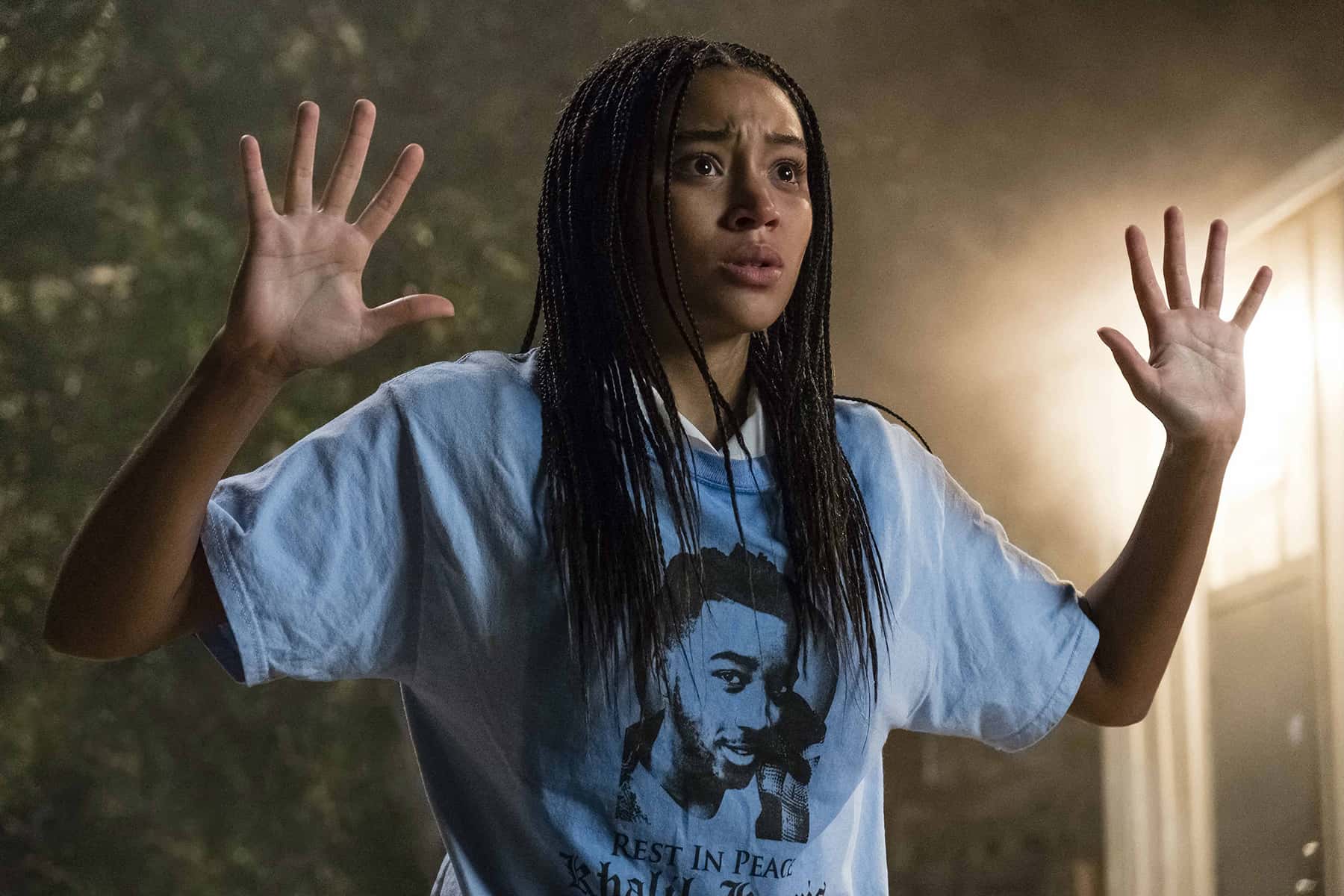
“You’ve got the words to change a nation, but you’re biting your tongue, you’ve spent a lifetime stuck in silence, afraid you’ll say something wrong.” – Emeli Sande
Hollywood is finally getting over its fear of telling the story of black America honestly. I sat in the majestic Oriental Theater on October 10 as part of a multi-racial, multi-generational audience, to see a film about race. It was surreal.
“The Hate U Give” was an extraordinary film that took the audience on a journey into the lives of African Americans and our fraught relationship with the criminal justice system. I will not spoil the film by explaining the details, because I want everyone to experience it for themselves.
The film was adapted from the New York Times bestselling book by the same title. Angie Thomas’s book was the inspiration for Milwaukee born filmmaker George Tillman Jr. The story is an all too familiar story for those of us in the black community. For many outside of our ethnic boundary, the film portrays our everyday efforts to survive within a system where our lives have never mattered in the way that lives of white people have. Many who reject the Black Lives Matter movement for social justice would benefit from listening to these types of stories.
The central character of the film a young girl named Starr, who is struggling to navigate the world she lives in. She has been placed in a precarious position of attending a wealthy and mostly white high school, while at the same time she lives in a poor and mostly-black section of town. She witnesses the shooting of her childhood friend Khalil by a white police officer. That incident flips the world she has strived to keep in balance upside down.
Starr’s story is one that way too many African Americans can relate to. As people of color, we know all too well the everyday dangers of contact with police. Even for those who do not live in impoverished communities, the tale is the same when it comes to interactions with police.
As I sat watching the film, transfixed by the dramatic shifts, I could not help but recall a phone conversation with a dear friend just last week. She and her lovely family live in a mostly white affluent neighborhood, where black people stand out like a sore thumb. As in many of these communities around the Milwaukee metropolitan area, blacks are seen as out of place. Her husband was walking home from work and for the second time within a week was confronted by white policemen. I will not go into the details, but the second of these encounters could have very easily ended the way Khalil’s life ended.
For those of us in the black community this is real. It’s not fiction.
As black men, the fear is palpable whenever we see police pulling us over in our cars. Many years ago, while living in the Los Angeles area, I was pulled over by police for no reason other than having Wisconsin licenses plates according to the officers. I was taking young boys to the barber shop when a LAPD squad began to follow me. I made sure I did nothing wrong but was pulled over anyway. The young boys and I were forced to get out of the car. The officer ran my information and then told me I was good to go. I asked why he pulled me over in front of the barbershop and forced us out of the car and he told me why.
As many black and Latino people could explain, the rationale was nonsense. He claimed that there had been a series of cases of people stealing cars in Wisconsin and then driving them all the way to California for a quick sale. I told him “you must think I’m an idiot.” He smiled and left.
On another occasion I was pulled over by a white police officer after making an illegal left turn. As I reached for my license and registration to give it to him, he approached my car with his weapon drawn and asked me if I had a death wish.
I had never received “the talk” as a young boy. “The talk” is when your parents or some member of the family sits you down and tells you how to act in the presence of police when you are black. You are told to place your hands in clear view of the officer, to talk slowly and clearly, to follow all of the officer’s instructions, to only answer the questions asked, and to be as non-threatening as possible if you expect to survive.
This is a talk that white people do not give their children out of fear for their wellbeing.
As a white person, you do not typically think that a traffic stop or other encounter with police is something that places your life in jeopardy. There may be some white people who give their children similar instructions about cooperating with police. They do not give this advice for the same reason we do.
For us, it is about saving lives. Most police officers in the country are white. In many cities much like in Milwaukee, the people they have most contact with are people of color, with blacks extremely over-represented in traffic and pedestrian stops. Here in the Milwaukee area, we know that we are more likely to have contact with police, whether the neighborhood is mostly black or sparsely populated with blacks. When we go to certain parts of the city or venture out into the suburbs we are not surprised to have contact with police.
We are accustomed to being asked, “What are you doing in this area?” The assumption is that we do not belong in certain places. I doubt that whites are accosted by police and questioned in this way. Due to our skin color, we are automatically suspect. I have written previously about the rash of white people calling the police on black people around the country for simply being black. The stories never seem to end. Just recently a young black man had the police called on him because he was babysitting white children.
One of the things that frustrates me is when I hear people say “I can’t belief things like this are happening in (insert year).”
Yes, they are happening. We can’t escape being black. We can get our education, get a good, respectable job, dress professionally, speak articulately, move to a so-called good area, and be the “good black” person at our jobs.
None of that matters to the police.
The young girl in the film had to live two lives. She had to comport herself differently at her high-priced prep school among her white classmates. She wanted to be everything other than the stereotypical black girl from “the hood.” She learned the art of code switching. As blacks, we feel pressure to conform to the norms of white people so that we do not come across as threatening.
We code switch to appease white people. We are pressured into being one person around whites and another person around our people. Some are called Uncle Tom’s for code switching. I have chosen to not code switch.
Years ago I began to notice how I automatically crossed the street when I saw white people coming from the opposite direction, so that I would not scare them. I would refuse to speak or have eye contact with white people, especially white females. The stereotype of dangerous black men was like a uniform I wore all the time. It did not matter how I was dressed. I would notice how I randomly became suspicious to white people. White people would lock their car doors or clutch their purses instinctively when I approached.
Even black people have become immersed in seeing other blacks as inherently dangerous, particularly young black males.
We cannot escape our skin. Our skin, which ranges from one end of the spectrum to the other in shades of lightness and darkness, should be something to have pride in. James Brown famously told us, “say it loud, I’m black and I’m proud.” But for many of us, pride in our blackness is not realistic. Some of us find shame instead.
Colorism within our group forces those with darker skin, thicker lips, and wider noses to feel insecure. The old tradition among the black elite years ago of the “paper bag test” was part and parcel of this internal discord. The way it worked was that you were acceptable in the black social elite if your skin tone was lighter than a brown paper bag. You were persona non grata if you were too dark.
The inherent fear our presence creates both inside and outside our community is very problematic. In fact, it is dangerous.
America created the black villain after the bloody Civil War led to the end of a formal system of raced based slave labor. As we began to assert ourselves as first class citizens for the first time in America, many whites in the North and South were displeased. We were vilified in the press around the country. Minstrel shows depicted us as depraved, childlike, criminally minded buffoons. It became the lens by which we would be portrayed for generations. We spread this disparaging portrait of blacks around the world in our films and television shows. It is impossible to miss.
How can you live comfortably in a world that sees your skin as a weapon? You approach the world around you differently. You either code switch or you do as I chose. I decided to stop expending energy to make white people not see me as dangerous. I realized I had little to no control over their unconscious biases about me. I have never felt a need to code switch when talking to white people. Some blacks feel the need to enunciate their words in a different way to “show” white people they are intelligent. They will not say words like “ain’t or “y’all” around white people because they have been taught it is not “proper English.” The last thing some blacks want is to be accused of is not being articulate.
I am from Mississippi. Whites and blacks down there speak what we derisively call Ebonics or Black English. We arrived on slaving ships speaking multiple languages from Africa. We were placed in a position where learning to read and write was illegal for black people and could be deadly. Who do you think taught us how to speak? White people did. Ebonics is what white people taught us. Black people and white people in my hometown in Mississippi speak the same way.
Most of us learn how to speak during our formative years before we ever attend a school. We have passed on the tradition of our language patterns from generation to generation. We speak in the way that those around us as children speak. Yet we are ridiculed for speaking this way and called dumb when we do not speak the Queen’s English “the right way.” It is not fair, but that is the world we live in.
Our skin produces a very real stress response in some white people. For law enforcement officers, the way they respond to this stress determines whether or not we will be the next unarmed black to join the long list of those killed by police. Whether we are armed or unarmed, our skin is a weapon to white and black cops alike. We are told that our body language and tone of voice are supposed to be tools to disarm police officers. But when fear is the primary response to black people, how do we know if we will survive? Why does the burden to ease white people’s fear fall on us? Why don’t white people wake up and recognize their biases and stop being so afraid?
Our society produces this fear and reinforces it daily. We are constantly bombarded on the local news with stories of “black criminals.” American society has created a thing it calls “black on black crime” without a parallel “white on white crime” narrative. Our unconscious minds condition us to fear black people. Dr. Bruce Perry is one of the foremost experts on how our brains force us unconsciously to react to stress.
“Most people are familiar with the “fight or flight” response, which is activated when we perceive a potential threat. Our heart rate and respiration increase, glucose is released for energy, and nonessential feelings like hunger or pain will be ignored. This is all in preparation to flee or fight. All input — feelings of hunger or thirst, loud noises, the sound of someone’s voice, some information we learn — first enters the lower, more primitive part of our brains, which determines if this input is familiar or unfamiliar. If the input is familiar, it then travels to a higher, more evolved part of our brain, where we decide based on memory whether it is good, bad, or neutral. If the input is unfamiliar, the brain’s default conclusion is “this can’t be good.” Any novelty — even desirable novelty, like learning something new — activates our stress-response system.”
Our society is extremely segregated and metropolitan Milwaukee is the poster child for segregation. Because whites here and across the country are so unfamiliar with black people, their brains default to what they have heard about us. When seeing blacks lead white people to feel “this can’t be good,” the stress response leads to negative consequences. These are the conditions in which police officers encounter black people in many instances.
The job of policing comes with stress attached to it. Dealing with stress is a part of the job. Dr. Perry tells us that “When you are overstressed, you no longer have efficient access to your higher brain functions. By the time you are in a state of alarm, significant parts of your cortex — the highest functioning part of your brain — have shut down entirely.” This cortex controls our emotional state and our decision making.
It is not hard to imagine that if this part of the brain is shut down in encounters between police and blacks, the result will be too many seemingly irrational decisions are made unconsciously. Our conscious minds will then rationalize what our unconscious mind makes us do. None of us wants to believe we are not in control. Police officers are trained to be in control. We see countless cases of police officers shooting and killing blacks. We hear the same old excuse that, “the officers feared for their safety.”
How is it that we accept trained professionals, who are well armed, are in fear of unarmed black people? We hear they have to make a split second decision or risk losing their lives. This would be somewhat believable if there were not so many viral videos to the contrary.
The recent case of Laquan McDonald in Chicago is a perfect example. McDonald was armed with a knife and walking away from multiple officers when he was shot sixteen times. He fell to the ground immediately, and most of the bullets hit him when he was on the ground and incapacitated. The police department and other leaders of Chicago did everything in their power to prevent the public from seeing the dash cam footage, which led to the Officer Jason Van Dyke‘s conviction of second degree murder and sixteen counts of aggravated assault with a firearm. Several officers have been charged with an official cover-up and perjuring themselves.
In light of what came out about this attempt to conceal the facts from the public, how are black people expected to trust the system? Were it not for a judge ordering the release of the video, I doubt the officer would have even been charged.
It is not a coincidence that the charges were filed the same day the video was released. The city leaders feared civil unrest and violence across the area if the officer was not charged. The video shows clear and concise proof that McDonald was moving away, not toward the police when he was shot. Despite this, the officer says he was in fear and justified in defending himself. I have heard people say that this was a sad day for law enforcement because it sends the “wrong” message when an officer “can’t defend himself.”
That viewpoint reminds me of an old joke about “believing me or your lying eyes.” There is no rational way you could say McDonald was a threat if you see the video. But our biases, which teach us to see black skin as a weapon, prevent many from being rational. I believe this is one of the themes of the film, “The Hate U Give.”
We need to spend a great deal of time re-educating ourselves. It has taken generations to implant and reinforce the view of blacks as dangerous into our minds. This will not change overnight, obviously. However, talking about how this negatively impacts the black community and traumatizes so many adults and children alike, goes a long way to taking a first step in the right direction.
I have to thank George Tillman Jr. for this film, who grew up only five blocks from where I was raised in the 53206 zip code. I hope that it leads to more understanding and ultimately and – most importantly – less violence in encounters between police and black men, women, and children.
© Photo
Milwaukee Film, Erika Doss, and Fox 2000 Pictures

